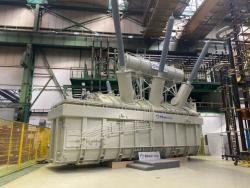
OR WAIT null SECS
© 2024 MJH Life Sciences™ and Turbomachinery Magazine. All rights reserved.
Service factor, safety factor in couplings
Developments in couplings have made the meanings of safety factor and service factor (also application or experience factor) more confusing. Many people use service and safety factors interchangeably. There is an important distinction, however, and understanding the difference is essential to ensure a proper coupling selection and application.
Below is an excerpt from the paper, “Couplings - Balancing Tutorial & “New Developments in Gas Turbine Couplings” by Joe Corcoran of Kop-Flex and Christian Wolford of Altra Industrial Motion.
Service factors are used to account for higher torque conditions of the equipment to which the coupling is connected. In API 671, a recommended service (or experience) factor of 1.5 times normal torque is applied to take into consideration “off design” conditions. This factor accounts for torque loads which are not normal, but which may be encountered continuously such as low temperature driver output, compressor fouling, or possible vibratory torques.
Different service factors are recommended depending on the severity of the application. Is it a smooth running gas turbine driven compressor application or a reciprocating pump application? Also note that service factors should be applied to continuous operating conditions rather than being used to account for starting torques, short circuit conditions, rotor rubs, etc.
Safety factors are used in the design of a coupling. Coupling designers use safety factors because there are uncertainties in the design. The designer’s method of analysis uses approximations to model the loading and, therefore, the calculated stresses may not be exact. Likewise the material properties such a modulus, ultimate strength and fatigue strength have associated tolerances that must be considered.
Because today’s disc and diaphragm couplings have stress loading that is more easily determined, stresses from misalignment, axial displacement and torque are more accurately known than with a gear coupling. Computational tools like finite element analysis (FEA) provide much more accurate results than in the past. In addition, the properties of materials used in high performance products are more controlled and better known. Consequently, couplings designed today versus those designed twenty five years ago can indeed operate reliably with lower calculated safety factors.
Generally, torque is the most significant load contributor to the overall stress in gear couplings while the safety fatigue factors of flexible-element couplings are generally not as affected by torque because the failure mode in dry couplings is not very sensitive to torque during continuous operating conditions. It is more often the stresses from misalignment (axial and angular) that affects dry coupling elements. Considering the number of variables that affect gear coupling design such as tooth form, surface finish, materials, temperature and especially lubrication it is difficult to evaluate the “useful” life of these couplings. This is just another reason why gear couplings are rarely used on today’s critical equipment.



